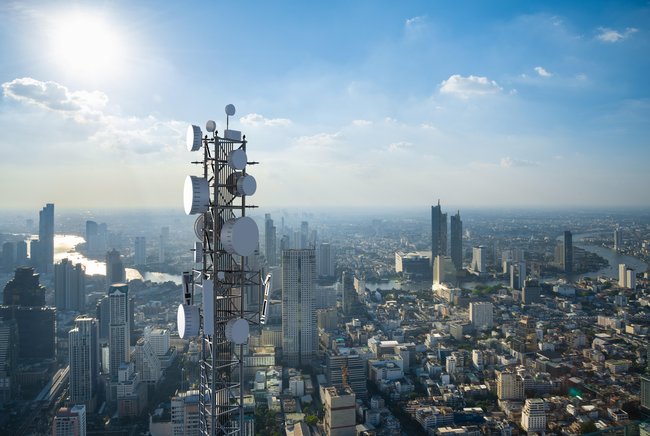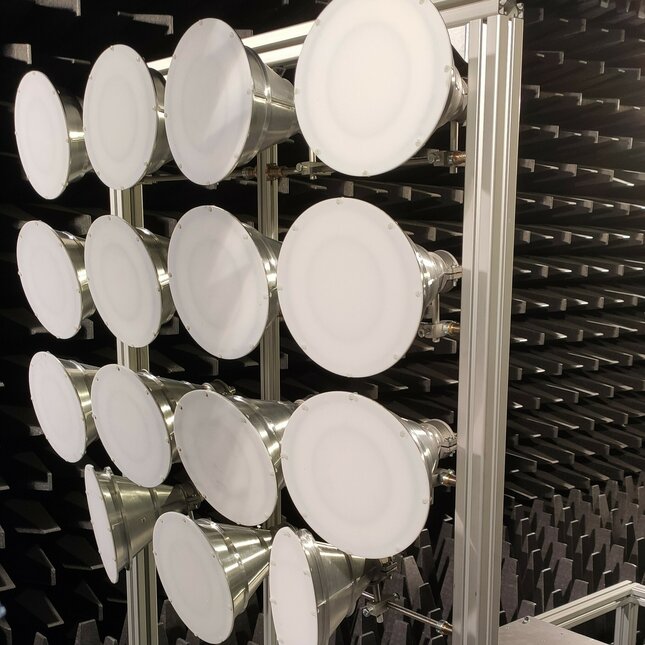Decreasing transmission power with antenna-based focused radiation power
Thomas Bressner defended his PhD at the department of Electrical Engineering on March 15th.

Smartphones and mobile telecommunication system are now part of everyday life. But with an increasing number of devices using mobile communication services, approaches are needed to deal with interference, power usage, and allow more users to access the network. For his PhD research, Thomas Bressner shows that mobile communications system can benefit from high-gain antennas to partition the mobile telecommunication cell with a fixed-beam configuration.
In communication systems, there are benefits to using high-gain antennas. For example, high antenna gain can be achieved with a single element and does not require additional beamforming hardware. Furthermore, an increased antenna gain can improve the signal-to-noise ratio (SNR).
There may be a disadvantage with multiple-input multiple-output (MIMO) communication systems though as increased antenna gain can lead to limited field of view. For his research, Thomas Bressner evaluated the performance of antenna systems, e.g. data rate, by comparing different antenna systems with narrow and wide single element beams. The main finding from the research is that using high-gain antennas in a fixed-beam configuration can decrease power consumption and provide high-data rates for millimeter-wave (mm-Wave) communications.

Importance of beam shape
Depending on the requirements, a more flexible phased-array with beamforming circuitry or a fixed-beam high-gain antenna system can be used to reduce hardware complexity. For example, a low-hardware complexity solution for a fixed-beam approach is the use of horn antenna elements designed with a specific beam shape to provide better coverage.
To achieve this, Bressner developed a multi-lens-horn (MLH) antenna system, which uses dual-polarised compact high-gain lens-horn antenna elements. For the development, a detailed system-level study is performed to identify the beam shapes and their pointing directions for optimal fixed-beam coverage with a limited number of antenna elements. Three beam shapes are identified, and the corresponding lens-horn antennas are designed using a full-wave simulation tool. The antenna elements are then made, measured, and included in the system simulation in this research, where a good agreement between simulated and measured data is observed.

Single-input single-output
The performance of the antenna system designs is analyzed for so-called single-input single-output (SISO) and MIMO mode. The outcome shows that a good signal separation between two users with a small spatial distance is possible. Furthermore, statistics for all three transmission techniques demonstrate that zero-forcing is the most significant advantage when multiple users are active on the network at the same time.
Although it is shown that the high-gain antenna system for a fixed-beam configuration can be realized and good performances are achieved while keeping the transmit power low, the mm-Wave feeding to the antenna can be quite lossy (experience dissipation of electrical energy).
A solution for the lossy issues is the combination of a radio-over-fiber (RoF) and the antenna system developed by Bressner. To show that such a system has favorable data rates, an RoF fed narrow-beam antenna system is proposed in collaboration with the electro-optical communications (ECO) Group. The measurements show that data rates of 1.4 Gbit/s for different beam steering angles are possible.
Title of PhD thesis: “Fixed Beam Coverage with Highly-Directional Antenna Systems for Energy-Efficient Ka-Band Mobile Communications”. Supervisors: Bart Smolders (TU/e), Ulf Johannsen (TU/e), and Martin Johansson (Ericsson Research, Ericsson AB).
Media contact
Latest news


